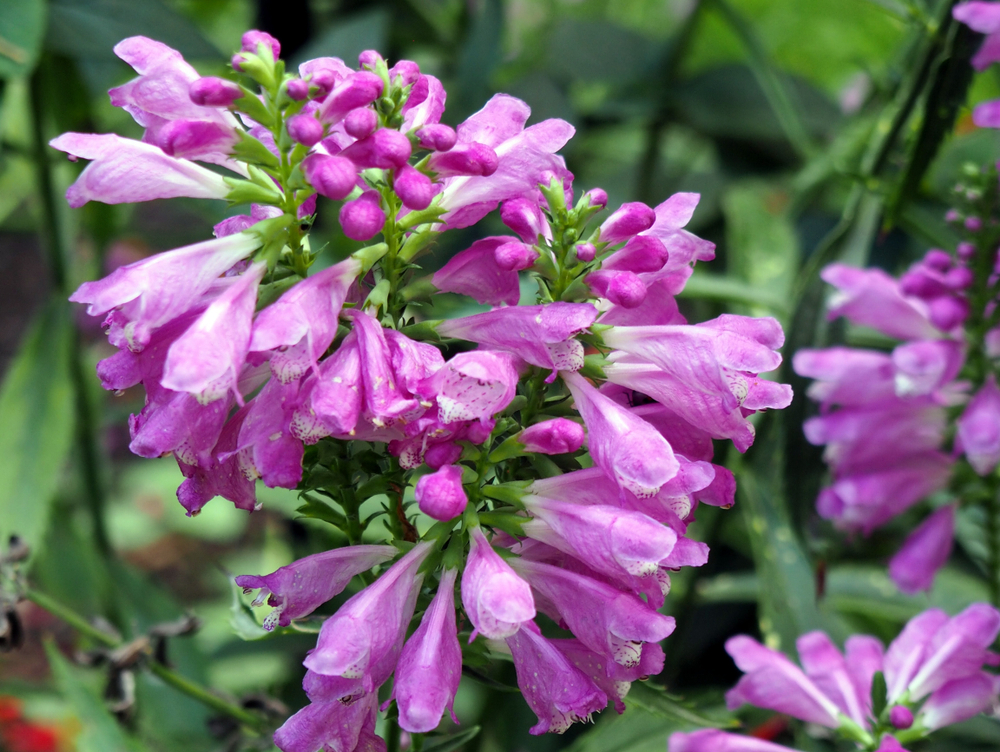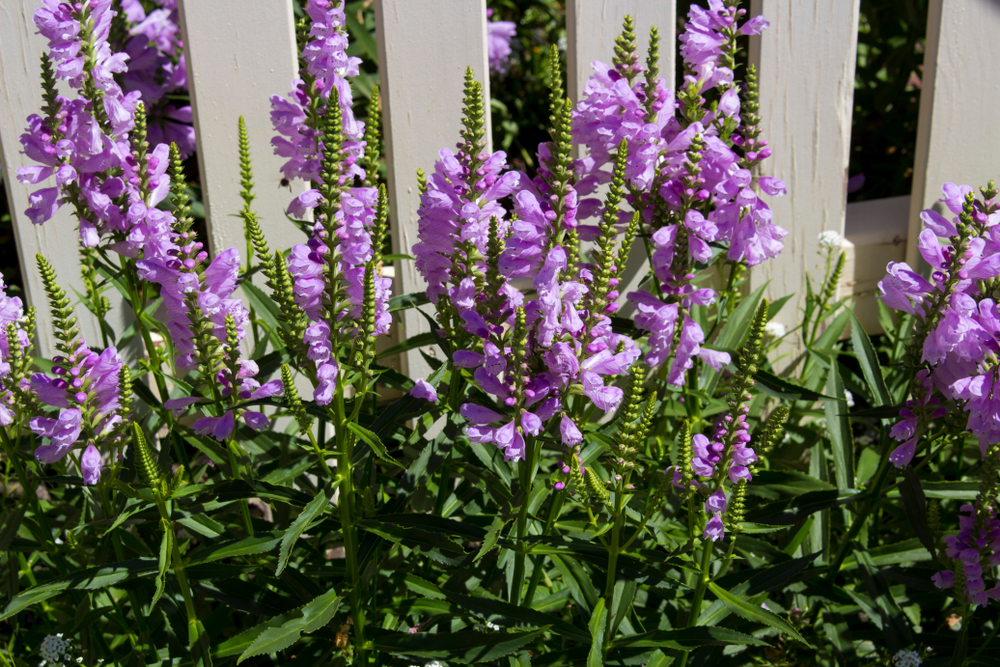A bit of color in your garden can make all the difference, and adding in a few Physostegia Virginiana blooms is sure to do the trick! Also known as the fall obedient plant, it is native to North America and is a member of the mint family. It’s easy to see why this plant got its name, as the individual flower petals will obediently remain in the position you place them.
| Botanical Name |
Physostegia virginiana |
| Common Name |
False Dragonhead, Fall Obedient Plant |
| Plant Type | Perennial |
| Flower Color | White, Pink, Purple |
| Size When Mature | 36-48 inches |
| Bloom Time | Summer |
| Sun Requirements | Full to Partial Sun |
| USDA Hardiness Zones | 3 – 9 |
| Soil PH Range | 5.0-7.0 |
| Soil Type | Acidic, Neutral, Alkaline, Well-draining |
| Water Needs | Low |
| Native Area |
North America |
What You Need to Know About Fall Obedient Plant
Physostegia Virginiana is a perennial plant that can reach up to 48 inches in height. This plant gets its name from its Greek roots: physa meaning “bladder” and tegos meaning “covering,” referring to the shape of its inflorescence. The leaves are opposite each other on the stem and are lanceolate shaped. They are a green color with a slightly purple hue.
The flowers of this plant are what make it so unique. They are tubular shaped and range in color from white to pink to purple. They bloom all throughout summer, from July to September. The plant’s beautiful flowers are arranged in whorls around the stem. This makes the plant look like it has several small flowers blooming all at once.
The plant is easy to care for and is relatively resistant to pests and diseases. New gardeners will have no trouble growing this plant as its needs are not complicated.
How to Care for Fall Obedient Plant
Here’s everything you need to know about growing and caring for a thriving fall obedient plant:
Light
The plant grows best in full sunlight but can tolerate some partial shade. However, its leaves scorch when exposed to extremely hot, direct sunlight. A bit of afternoon shade will do the trick.
Water and Soil Needs
Being a slightly drought-tolerant plant, you don’t need to water it too often. Once or twice a week should be sufficient. Be careful not to overwater because root rot is often a problem with this plant. Always wait in between watering and ensure that the soil’s top layer is dry to the touch before watering again.
In terms of soil, it can be planted in chalk, clay, loam, or sand. Sandy or loamy soils work best with a pH range of 5.0-7.0. Also, make sure that the soil is well-drained. If your soil is too dense, consider adding some organic matter to improve drainage.
Temperature Requirements
One of the best things about this plant is it can thrive in a wide range of temperature conditions. It does best between -40°F and 30°F and is hardy in USDA zones 3-9. It can tolerate both hot and cold weather and will continue to bloom even in the heat of summer. In fact, the blooms are often more vibrant in hotter climates. However, if the weather gets too extreme (either hot or cold), the leaves may start to turn brown and drop off so a watchful eye during extreme weather conditions is necessary.
Fertilizer
The best fertilizer to use on a Physostegia Virginiana is a balanced and slow-releasing fertilizer. It’s best to apply this during spring before the plant starts to bloom. Once it starts blooming, you can reduce the fertilizer or stop using it altogether.
Common Diseases
Physostegia virginiana is not susceptible to many diseases. Still, there are a few common ones that you should be aware of.
Powdery mildew is one of the most common problems that affect this plant. This fungal disease appears as white powder on the leaves causing discoloration and distortion. Similar to root rot, overwatering or poor water drainage can lead to this disease.
Fall Obedient Plant Propagation
Propagating the fall obedient plant is relatively easy and can be done by seed, division, or cuttings.
Seeds can be collected from the flowers in late summer and sown in a cold frame in the fall. Growing the plant with seeds can be a bit of a gamble, as the resulting plant may not be true to the parent.
The easiest way to propagate Physostegia Virginiana is by division in early spring. This is best done every 3-4 years to keep the plant healthy and vigorous. To divide the plant, dig it up and carefully separate the roots into two or more sections. Replant each section in a new location and water well.
Additionally, you can also take stem cuttings from the plant in late spring to early summer. With that in mind, cuttings should be taken from new growth at least 6 inches long. Place the cuttings in a moistened potting mix and keep them in a bright, warm location. After a few weeks, you’ll notice the cuttings will develop roots. You can then transplant them into individual pots.


